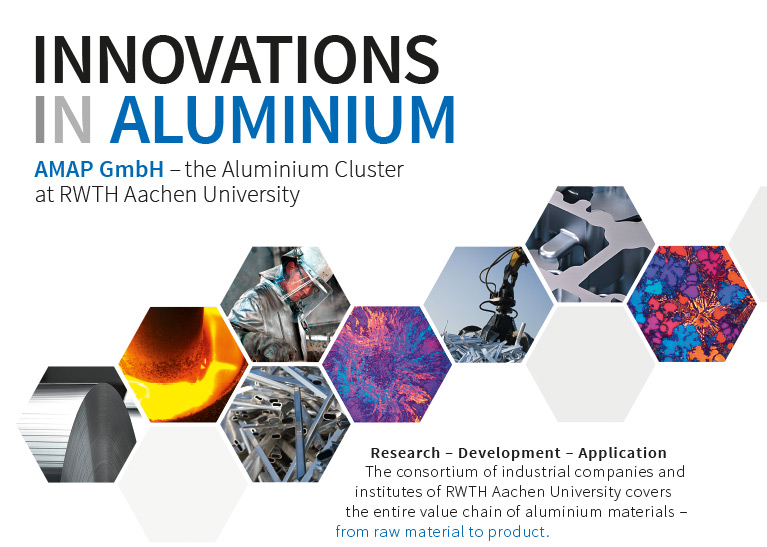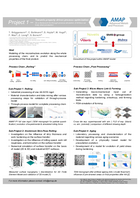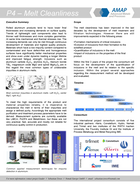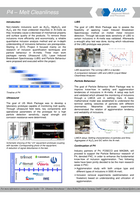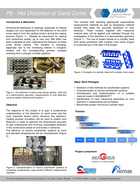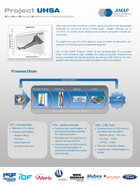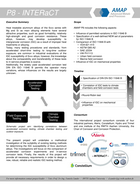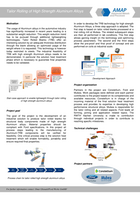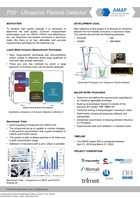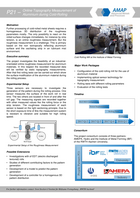Project 1
Modelling of components made of rolled and annealed aluminum sheets with particular properties for the automotive industry
The project topic covers the display of the entire process chain for the production of rolled sheet material from aluminium through simulation models and thus it shall enable to pursue simultaneously chosen properties.
Project 2
Microstructure Modelling in Forming Processes
The project topic includes the modelling of the microstructure at forming processes; by means of numeric simulation models the layout of new as well as the optimisation of already existing process chains shall be enabled. The target is to be able to predict important product properties, especially regarding microstructure resp. grain size distribution.
Project 4
Melt Cleanliness
Increasing requirements on rolled products and casting components from aluminium can only be met through continuous material development and qualitatively most significant products. Materials, poor in non-metallic impurities and showing sound, homogeneous surfaces, accomplish significantly better mechanical properties and even with cyclic load lead to a longer lifetime and optimised strength.
Project 5
Sustainable Recycling Concept: Efficient Melting
In the last years an increasing trend for the optimisation of technological processes regarding energy efficiency and environmental sustainability could be noticed. Within this research cluster the optimisation of the recycling process of aluminium is investigated. One of the main targets is the development of a model for the aluminium recycling process. Among others it shall contain the mapping of liquid and gas reactions as well as the fluid dynamics and thermal conditions in the recycling process.
Project 6
Hot Distortion of Sand Cores during Casting
The dimensional stability of castings is essentially influenced by the distortion of the laid sand cores during casting. This up to now only little considered part of the casting process becomes more important, especially through the increase of inorganic binder systems and the process conversion caused by this. Therefore the targets of the project are to understand and – via simulation - predict especially the distortion of sand cores and the distortion-relevant essential variables for the dimensional stability of the component.
Project 7
Ultra High Strength Aluminium Alloys for the Automotive Large-Scale Production
Solutions for structural vehicle components from ultra high-strength aluminium alloys, which can provide an alternative for ultra high-strength (hot formed) boron steels, will be worked out in this project. Thereby the optimisation of the process chain “from sheet to component” is in the center with the target of a production suitable for large-scale. Further project focuses will be new / adapted joining concepts as well as new simulation tools for the process (forming simulation) and component simulation (crash).
Project 8
“INTERaCT” - Intergranular Corrosion Testing of 6xxx‐Aluminum Alloys
The present project aims on the methodical investigation of the suitability of existing testing methods for determining the IGC susceptibility of 6xxx aluminum alloys. The investigations focus on the comparison of accelerated corrosion experiments and in-service corrosion tests. Finally, the results of this project will provide all necessary requirements in order to design a new, robust, reliable and realistic IGC testing method.
Project 9
Heat treatment of Cast Alloys and prediction of final properties
Detailed knowledge of the heat treatment process of aluminum castings has the potential to lower the energy consumption during heat treatment, take full advantage of the material’s potential and increase the competitiveness of the casting industry in general.
Project 10
Design and process development of hollow structural HPDC components incl. joining investigations
- Substitution of welded steel sheet components e.g. torque box
- Adopt casting to Joining Technology/ Develop appropriate joining technology
- Casting process development (HPDC) of hollow structural component using lost cores
- Design of weight reduced Al-component (casting)
Project 11
Tailor rolling of High Strength Aluminium Alloys
The usage of Aluminum alloys has significantly increased in recent years leading to a substantial weight reduction. This weight reduction trend has to be maintained to additional light weighting technologies. Tailor rolled Blanks (TRB) offer an interesting solution through an adequate thickness distribution through the blank allowing for an optimized usage of the weight where it is requested. This technology is however restricted right now to steels. The industrial feasibility of TRB with high strength Aluminum alloys still needs to be demonstrated. In particular the solution heat treatment phase which is necessary in order to guarantee final properties needs to be demonstrated.
Project 12
Aluminum Casting for High Volume Production of Structural Nodes in BIW
Decreasing the body in white’s (BIW) weight is considered as one of the solutions, which might have a great impact on the emissions’ reduction potential.
This weight reduction can be achieved by the integration of lightweight materials, such as Aluminum, in the vehicle body structures, in the form of castings.
Project 20
Ultrasonic Particle Detector
Main objective of this project is to develop an ultrasonic detector for non-metallic inclusions in aluminum melts, which is able to verify melt quality and is able to operate under industrial conditions. Research focus is to develop a measurement system that ensures a high reproducibility and continuity regarding the measurement results. Furthermore, the measurement system is supposed to operate without expert knowledge.
Project 21
Online Topography Measurement of Aluminium during Cold-Rolling
Further processing of cold-rolled metal sheets requires a homogeneous 3D distribution of the roughness parameters mostly. The only possibility to react on the rolled surface changes immediately, for instance by strip tension, is an online roughness measurement. But the roughness measurement is a challenge. This is primary based on the non isotropically reflecting aluminium surface and the oscillating strip in an lubricant mist environment.
Project 22
UniCorn - Understanding the Intergranular Corrosion of 6000 Aluminium Alloys
The present project will undertake a methodical investigation on the mechanism of intergranular corrosion in 6000 alloys. The influence of the Mg/Si ratio, the copper content, and the heat treatment on phase precipitation and its effect on intergranular corrosion will be analyzed.
Project 24
Cast Part Feasibility Assessment Method
In-service performance of cast parts not only depends on part design, but also on manufacturing effects like part orientation in mold, gating & feeder system (size, location) and process parameters (filling rates, melt & die temperatures). Casting process restrictions and requirements are of equal importance as attribute requirements (strength, durability, NVH, crash).
Conventional component optimization relies on expert skills and expert guided analysis loops. MDO tools as well as design engineers require fully automated tools & expert systems to evaluate the feasibility and quality of cast parts upfront, quantitatively and efficiently.
The objective is to develop an automatic tool set to run casting simulations, to quantify existing casting process know-how, to make it available for automatic evaluation schemes and to provide validation example parts. more...

